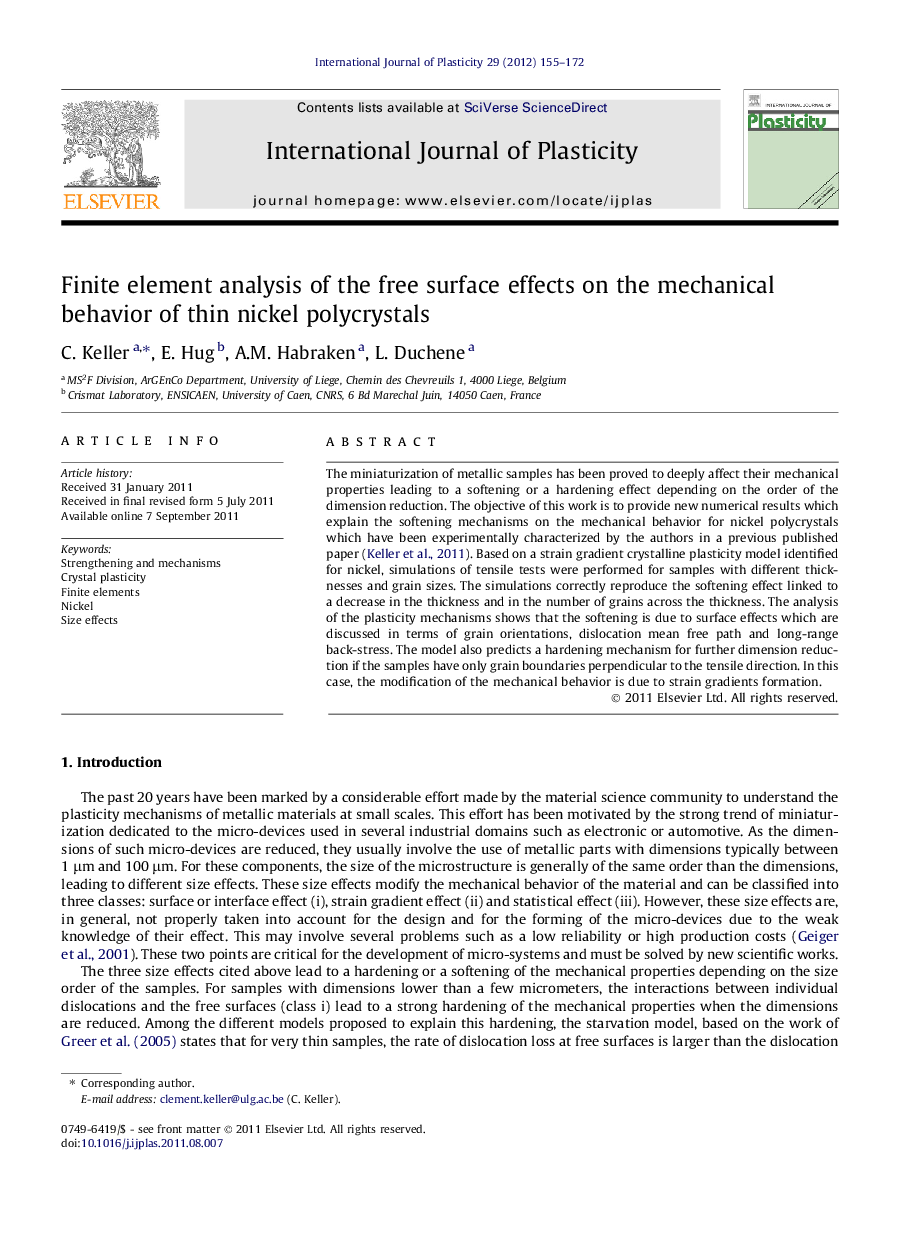| Article ID | Journal | Published Year | Pages | File Type |
|---|---|---|---|---|
| 786504 | International Journal of Plasticity | 2012 | 18 Pages |
The miniaturization of metallic samples has been proved to deeply affect their mechanical properties leading to a softening or a hardening effect depending on the order of the dimension reduction. The objective of this work is to provide new numerical results which explain the softening mechanisms on the mechanical behavior for nickel polycrystals which have been experimentally characterized by the authors in a previous published paper (Keller et al., 2011). Based on a strain gradient crystalline plasticity model identified for nickel, simulations of tensile tests were performed for samples with different thicknesses and grain sizes. The simulations correctly reproduce the softening effect linked to a decrease in the thickness and in the number of grains across the thickness. The analysis of the plasticity mechanisms shows that the softening is due to surface effects which are discussed in terms of grain orientations, dislocation mean free path and long-range back-stress. The model also predicts a hardening mechanism for further dimension reduction if the samples have only grain boundaries perpendicular to the tensile direction. In this case, the modification of the mechanical behavior is due to strain gradients formation.
► We used a strain gradient crystalline plasticity model to reproduce the mechanical behaviour of Ni. ► We investigated the influence of a decrease in thickness and in ratio thickness over grain sizes on the mechanical behaviour. ► We analysed the surface effects on mechanical behaviour showing a strong softening of the behaviour for thin samples.
